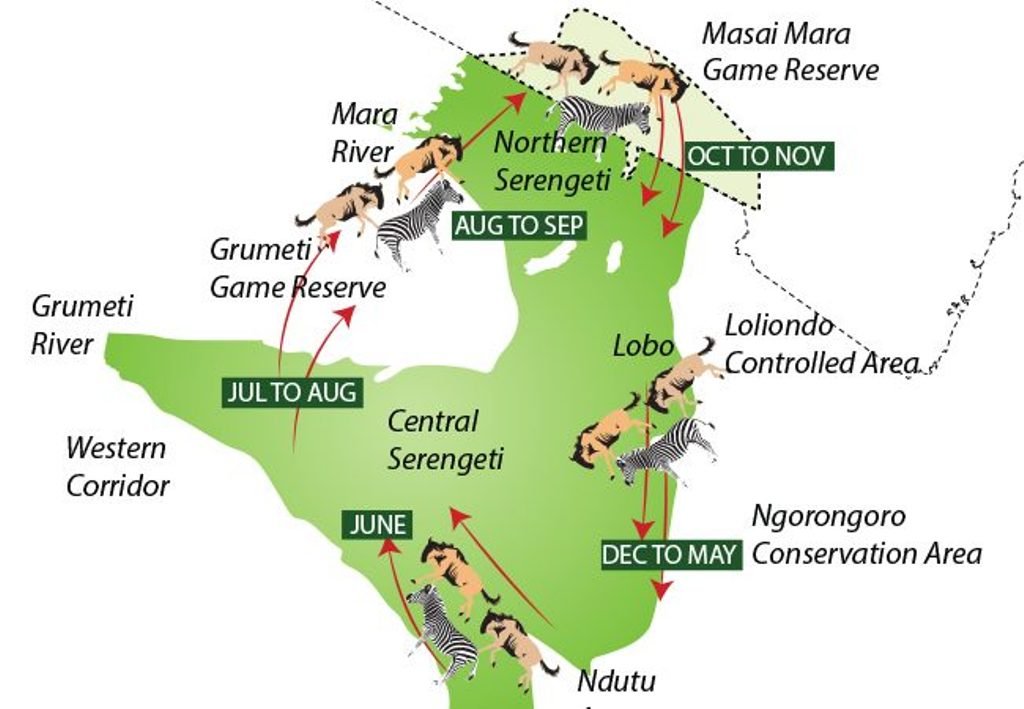The Great Wildebeest Migration: Nature’s Most Spectacular Event
The Great Wildebeest Migration is one of the world’s most awe-inspiring natural phenomena, showcasing the annual mass movement of millions of wildebeest, zebras, and gazelles across the vast Serengeti ecosystem. This breathtaking journey is driven by the relentless search for food and water, creating a continuous cycle that unfolds each year.
Spanning approximately 30,000 square kilometers, the Serengeti Migration encompasses both Tanzania and Kenya, involving over 1.5 million wildebeest, 200,000 zebras, and 350,000 gazelles. This epic migration is a vital component of the Serengeti ecosystem, maintaining the delicate balance between predator and prey.
Phases of the Great Migration
The Great Wildebeest Migration can be divided into three key phases: the Calving Season, the Rutting Season, and the Migration Season.
Calving Season (January – February): In the southern Serengeti, wildebeest give birth to their young during this critical period. The calving season is essential for the survival of the species, as the calves must be strong enough to endure the upcoming migration.
Rutting Season (May – June): This is the time of year when wildebeest mate, with males engaging in fierce battles for dominance. The intense competition ensures that only the strongest genes are passed on.
Migration Season (July – October): As the dry season sets in, the herds begin their northward trek, crossing treacherous rivers like the Grumeti and Mara. The iconic Mara River crossing is particularly dramatic, with predators such as crocodiles lying in wait, making this one of nature’s most dangerous spectacles.
Migration Timeline
The Serengeti Migration is a year-round event, though the most striking scenes occur between July and October. During this period, the wildebeest and other herbivores migrate from the Serengeti to Kenya’s Maasai Mara. This migration is a direct response to the dry season in the Serengeti, which forces the animals to seek out new sources of food and water.
December: The herds begin their return to the southern Serengeti, where the rains have rejuvenated the grasslands.
February: Calving occurs, with young wildebeest joining the herds by March.
May – June: The migration moves westward and northward, with the wildebeest crossing the Grumeti River in June.
July – August: The dramatic Mara River crossing takes place, a perilous journey that highlights the dangers of the migration.
September – October: The herds start their return south, completing the migration’s annual cycle.
The Great Wildebeest Migration is not just a remarkable natural event but also a critical reminder of the importance of preserving our planet’s ecosystems. Witnessing this phenomenon is a once-in-a-lifetime experience, attracting thousands of tourists who come to marvel at the raw beauty and power of nature.
For a detailed itinerary and to plan your own migration adventure, click here.
Below is a map illustrating the typical path of the Great Migration throughout the year.



